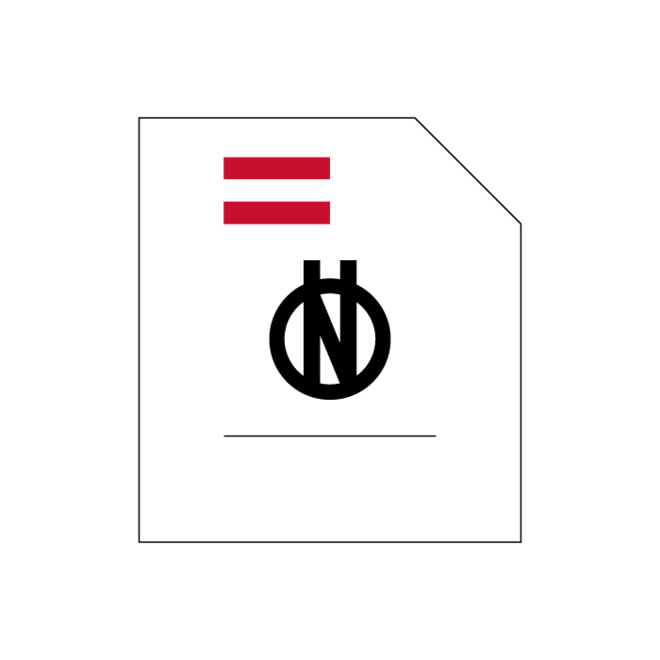Jetzt anpassen und kaufen
171,12 €
exkl. USt.
Konfigurieren


Norm
ÖNORM EN ISO 10781
Ausgabedatum: 2016 01 15
Health Informatics - HL7 Electronic Health Records-System Functional Model, Release 2 (EHR FM) (ISO 10781:2015)
The HL7 EHR System Functional Model provides a reference list of functions that may be present in an Electronic Health Record System (EHR-S). The function list is describ...
Weiterlesen
Gültig
Herausgeber:
Austrian Standards International
Format:
Digital | 82 Seiten
Sprache:
Englisch
Standards mitgestalten:
ICS
The HL7 EHR System Functional Model provides a reference list of functions that may be present in an Electronic Health Record System (EHR-S). The function list is described from a user perspective with the intent to enable consistent expression of system functionality. This EHR-S Functional Model, through the creation of Functional Profiles for care settings and realms, enables a standardized description and common understanding of functions sought or available in a given setting (e.g. intensive
care, cardiology, office practice in one country or primary care in another country).
The HL7 EHR-S Functional Model defines a standardized model of the functions that may be present in EHR Systems. From the outset, a clear distinction between the EHR as a singular entity and systems that operate on the EHR, i.e. EHR Systems, is critical. Section 1.1.3 describes the basis and foundation for the HL7 definition of an EHR System. Notably, the EHR-S Functional Model does not address whether the EHR-S is a system-of-systems or a single system providing the functions required by the users.
This International Standard makes no distinction regarding implementation; the EHR-S described in a Functional Profile may be a single system or a system of systems. Within the normative sections of the Functional Model, the term “system” is used generically to cover the continuum of implementation options. This includes “core” healthcare functionality, typically provided by healthcare-specific applications that manage electronic healthcare information. It also includes associated generic application-level capabilities that are typically provided by middleware or other infrastructure components. The latter includes interoperability and integration capabilities such as location discovery and such areas as cross application workflow. Interoperability is considered both from semantic (clear, consistent and persistent communication of meaning) and technical (format, syntax and physical connectivity) viewpoints. Further, the functions make no statement about which technology is used, or about the content of the electronic health record. The specifics of ‘how’ EHR systems are developed or implemented is not considered to be within the scope of this model now or in the future. This EHR-S Functional Model does not address or endorse implementations or technology, nor does it include the data content of the electronic health record.
Finally, the EHR-S Functional Model supports research needs by ensuring that the data available to researchers follow the required protocols for privacy, confidentiality, and security. The diversity of research needs precludes the specific listing of functions that are potentially useful for research.
This Functional Model is not:
- a messaging specification;
- an implementation specification;
- a conformance specification;
- an EHR specification;
- a conformance or conformance testing metric;
- an exercise in creating a definition for an EHR or EHR-S.
The EHR-S Functional Model is not sufficient to provide a longitudinal health record; however, it will contribute to its development. The information exchange enabled by the EHR-S supports the population of clinical documents, event summaries, minimum data sets, claims attachments, and in the future will enable a longitudinal health record.
ÖNORM EN ISO 10781
2016 01 15
Health Informatics - HL7 Electronic Health Records-System Functional Model, Release 2 (EHR FM) (ISO ...
Norm
↖
ÖNORM EN ISO 10781
2010 02 15
Electronic Health Record-System Functional Model, Release 1.1 (ISO/HL7 10781:2009) (CD not included)...
Norm
Technische Regel
ISO/TR 12773-1:2009
Ausgabedatum :
2009 06 04
Business requirements for health summary records — Part 1: Requirements
Technische Regel
ISO/TS 13606-4:2009
Ausgabedatum :
2009 09 16
Health informatics — Electronic health record communication — Part 4: Security
Technische Regel
ISO/TS 17090-1:2002
Ausgabedatum :
2002 10 03
Health informatics — Public key infrastructure — Part 1: Framework and overview
Norm
ISO 18308:2011
Ausgabedatum :
2011 04 07
Health informatics — Requirements for an electronic health record architecture
Norm
ISO/IEC 2382-8:1998
Ausgabedatum :
1998 11 05
Information technology — Vocabulary — Part 8: Security
Norm
ISO/HL7 10781:2015
Ausgabedatum :
2015 07 31
Health Informatics — HL7 Electronic Health Records-System Functional Model, Release 2 (EHR FM)
